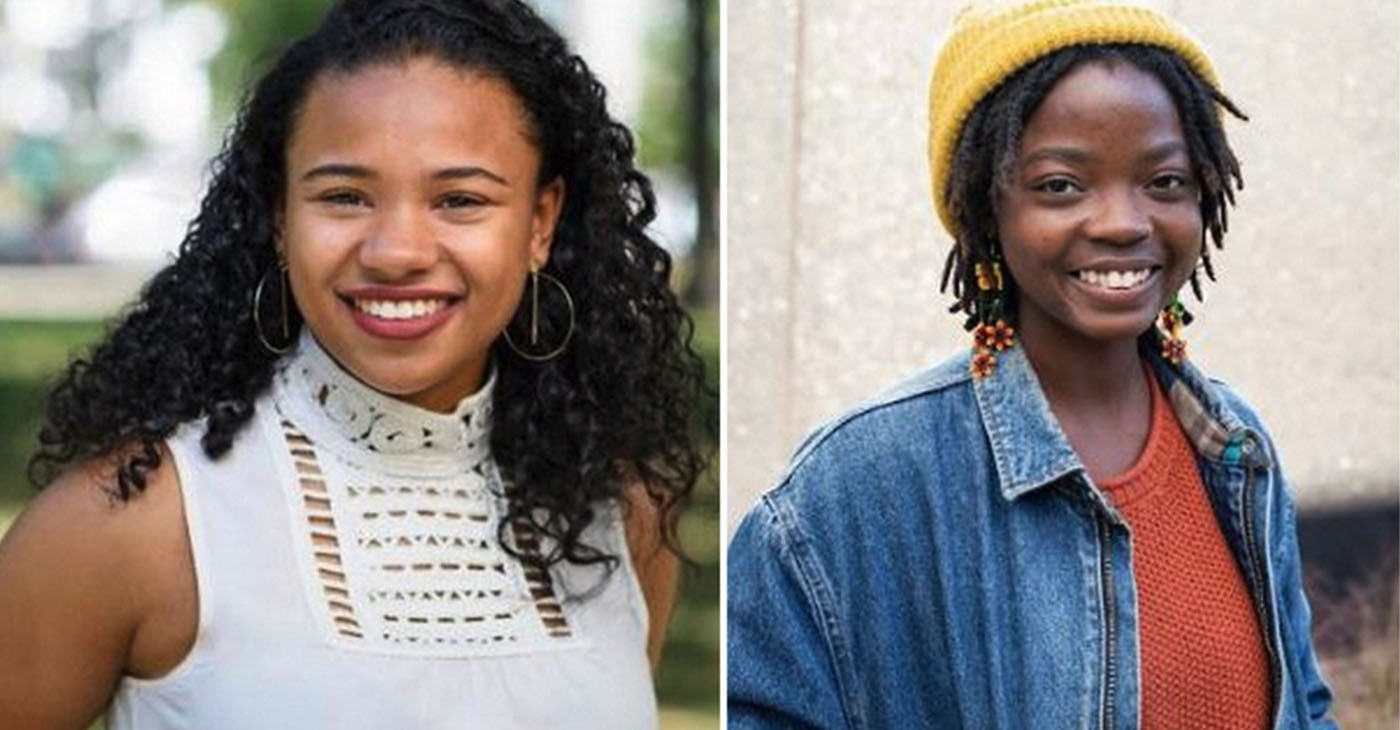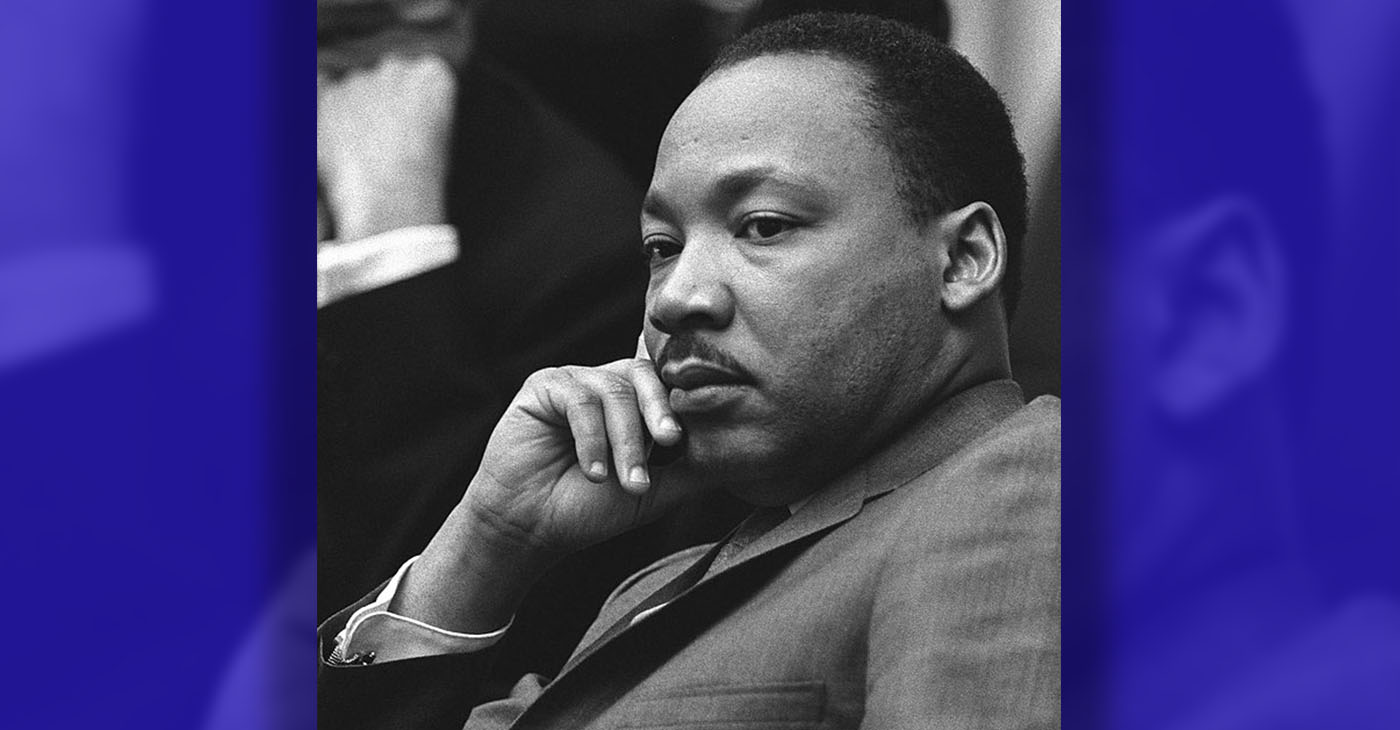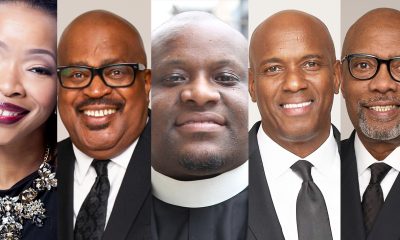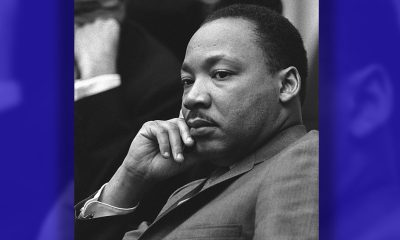#NNPA BlackPress
Black College Students Lead Movement to Eliminate Bias in Tech
NNPA NEWSWIRE — “Civics of technology derives from a lot of related concepts, but it’s about how we can use technology to further civic engagement, the democratic process, and social justice — especially anything that will galvanize a group of individuals to create social good,” Cierra Robson, associate director of the Ida B. Wells Just Data Lab, explained.
The post Black College Students Lead Movement to Eliminate Bias in Tech first appeared on BlackPressUSA.

By Nadira Johnson | Word in Black | The Afro
From self-driving cars that can’t detect folks with darker skin to keep from running them over, to digital assistants like Siri that have trouble understanding non-White accents, technology is biased, and it is hurting Black folks.
“A lot of people will look toward technology as the end all, be all solution to a lot of social issues, but often social issues are not solved by technology, and technology often exacerbates these social issues,” said Cierra Robson, associate director of the Ida B. Wells Just Data Lab which brings students, educators, and activists together to develop creative approaches to data conception, production, and circulation.
Founded in 2018 and led by Ruha Benjamin, a sociologist and professor in the Department of African American Studies at Princeton University, the lab focuses on finding ways to “rethink and retool the relationship between stories and statistics, power and technology, data and justice.”
“Civics of technology derives from a lot of related concepts, but it’s about how we can use technology to further civic engagement, the democratic process, and social justice — especially anything that will galvanize a group of individuals to create social good,” Robson explained.
In her role at the lab, Robson works closely with Princeton students on a variety of projects that look at how technology bias is contributing to bias in all areas of our lives, from healthcare, to labor, and education.
Robson first became passionate about finding solutions to biased technology after learning about how the issue leads to violent over-policing.
“When I was an undergrad at Princeton, I had access to this entire wealth of resources that was kind of stuck in the university,” Robson said. “One of the biggest things that I wanted to do when the labs started in the summer of 2020 was figure out a way to get those resources from Princeton into the community, to people who needed them.”
And people do need this information, desperately, because biased technology is killing Black and Brown folks and contributes to higher rates of incarceration and injustice.
“Predictive policing technologies — there’s a whole bunch of them — but one of the ones I focus on a lot is that it predicts where crime is likely to happen in a given city, and that prompts police to go be deployed in those areas so that they can catch whatever crime might happen there,” Robson said. “What they base that data on is an algorithm that uses data on historic police interaction, but no one really stops to think that those historic police interactions are colored by all sorts of discriminatory processes.”
Robson points out that a recent study conducted by Aaron Chalfin, a criminologist at the University of Pennsylvania, found that in Southern cities with large Black populations the homicide rate did not change when more police presence was added. But, more officers made arrests for low-level offenses like alcohol-related infractions, “which are not typically seen as contributing to public safety.”
“The fact is that Black communities are historically over-policed even before the advent of these technologies and algorithms,” Robson explained. “When you feed the data that focuses on arrests only in Black communities into an algorithm that predicts where crime is likely to happen, what you are going to get out of it is that crime only happens in Black and Brown neighborhoods when that’s not true.
“As a result,” Robson said. “Police are deployed overwhelmingly to Black and Brown neighborhoods, and it creates this cycle where more data is being created because there are more police there. This obviously has negative impacts on people’s lives. From the waves of violent policing that we’ve seen for quite some time, it’s evident why you would not want police in your community all the time. There has also been chronic over-policing and under-protection. Just because police are in a neighborhood, does not equate to greater safety in that neighborhood.”
Through her work with the lab and the Civics of Technology conference, Robson hopes to inspire more students to ask critical questions about how data is sourced and how technology is used in Black and Brown communities so that they can use their newfound knowledge to create better practices in whatever fields of work and study they choose to venture in to.
“A lot of them will end up in politics, in the tech industry, as lawyers, doctors, and all sorts of things,” Robson said. “One of the best things that comes out of teaching students of all kinds about this work is that it ripples out in every single environment in our daily lives, whether that be the law, whether that be healthcare, whether that be worker justice and labor.”
Participants in the Ida B. Wells Just Data Lab might go on to earn a doctorate degree or work in the tech industry, but that isn’t required. Robson says if they end up working in another industry entirely, she wants students to be “able to take some of the tools that we teach them about — about fair design practices and questioning what it really means to have something be objective or questioning what it really means for something to be data-driven — into whatever area they’re going into in the future. Hopefully, if we can create enough students to do that, we are creating a new generation with a new awareness so that people are thinking twice about the technologies that they deploy and the data that they use in every area.”
To that end, in early August, the student members of the lab participated in Civics of Technology, a free, two-day virtual conference designed to bring the knowledge they’ve acquired while participating in the lab to the greater public.
Technology and education justice
During the virtual conference, Collin Riggins, a junior at Princeton and a research associate at the lab, and Payton Croskey, a senior at Princeton and creative content director for the lab, led “Reimagining Education Justice: Practices and Tools for Tech Freedom Schools,” a workshop which focused on education justice — from early childhood to college and beyond the traditional classroom. Their goal was to determine how technology can be used to promote better education practices for diverse students if it is used properly.
“The theme for this summer’s convention is Freedom Schools,” Croskey said, “Freedom Schools is where all of the research groups and products stem from. We are rooting ourselves in history before we try to build something new for the future.”
Freedom Schools were created in 1964 as entirely new schools specifically designed for the education and advancement of Black students. Supporters of these schools believed in paying attention to and meeting the unique needs of each individual child. Bringing that concept into the present day, Croskey and Riggins say that if we want to eliminate bias in education, we must similarly listen to and respond to the needs of the communities we wish to serve with technology.
We need to shift to “Thinking how we can build technology and community with those that the technology is seeking to serve,” Croskey said. “If we are building technology for young Black students in New York City, and we are saying that this is going to help them learn, then they also need to be part of that conversation and need to be included in that design.
“Technology is not going to be one size fits all,” Croskey said. “Especially in the education field, technology is going to need to be curated for a specific group and specific environments. Not pushing this one model that everyone needs to follow.”
“Although our goals are revolutionary, our work spawns from a long tradition of Black radical education,” Collins added. “We’re looking at the Freedom Schools, which decided in the summer of 1964 to create entirely different schools for Black students so they could learn frameworks for how to resist and how to function in daily life.”
“Across any institution, and even maybe across the world in general, there is a fixed approach to how you engage with technology,” Collins said. “One of the things the Lab does beautifully is allow people from different backgrounds and disciplines to come together in conversation. This has been very radical to me, especially at an institution like Princeton, which is very tech-driven and quantitatively driven. It’s nice to be able to engage with these concepts through art, or through storytelling, or through speculative fiction, and that not only be accepted but embraced. That inclusivity is rare.”
The two students have also used their time in the lab to focus on the use of surveillance in schools, which has significantly increased given the rising rates of school shootings. Although surveillance may prove useful in keeping some students safe from shooters, Croskey worries this will prove dangerous for Black students and students from other marginalized backgrounds.
“There is a lot of surveillance being used these days with the rise of school shootings. There is a lot of data being collected and a lot of tracking done on students who do not have the power to consent,” Croskey said. In addition, there are “Parents who are not being given the power to truly consent because they are not being given full explanations about how this data is being used or where it will be sent to.”
Their hope is that technology can be reimagined in a way that is “curated for a specific group and specific environments. Not pushing this one model that everyone needs to follow,” Croskey explains.
Connecting technological and environmental justice
It’s been a boiling hot summer with historic droughts ravaging the globe, but many people don’t often think about the connections between technology and environmental justice.
“When you look into it, there are a lot of ways that the technologies that we are using can be harmful to the environment,” said Kenia D. Hale, a fellow at Princeton’s Center for Information Technology. During the Civics of Technology conference, Hale, who is also a graduate of Yale University, led “Reimagining Environmental Justice: Practices and Tools for Tech Freedom Schools,” a session that explored the intersection of the two topics.
Hale says that although the energy needed for a single internet search or email is small, there are approximately 4.1 billion people, or 53.6 percent of the global population, who now use the internet, and the associated greenhouse gasses emitted with each online activity can add up. It turns out that the carbon footprint of our gadgets, the internet, and the systems supporting them account for about 3.7 percent of global greenhouse emissions. This is similar to the amount produced by the airline industry globally.
“I wanted to figure out ways to challenge the idea that technology is automatically better for the environment and spreading more awareness about the ways it can be quite harmful. People think there is no physical impact, but there is actually a lot of physical impact,” said Hale. “You can’t do anything without a laptop, so this isn’t to shame people into not buying one, but more so to spread awareness. Get engaged with the environmental organizations and activist groups that are in your city. It’s better to be more proactive in getting organized with our communities on how to collectively combat these things.”
Hale says that some questions that folks should be asking themselves when determining the environmental impact of a technological tool are who is mining the materials that go into your car, computer, or smartphone, and does the company that makes this product overly contribute to global pollution?
Learning more about the effects of technology on our lives
To learn more about how to spot technology bias and how to advocate for better data sourcing practices in your community, the lab’s research and resources page lists plenty of useful information.
In addition, the lab’s founder and director, Ruha Benjamin, has written extensively about the connections between technology and inequality. Her 2019 book “Race After Technology: Abolitionist Tools for the New Jim Code” explores how new technologies are framed as “benign and pure,” even though they perpetuate social inequities. The book, which was a 2020 winner of the Oliver Cromwell Cox Book Award (for anti-racist scholarship) from the American Sociological Association Section on Race & Ethnic Minorities also shares ideas on how we can combat these inequities.
In addition, “Black Power: The Politics of Liberation, by Kwame Ture and political scientist Charles V. Hamilton, which defines Black Power, presents insights into the roots of racism in the United States and suggests a means of reforming the traditional political process for the future through technology and other tools.
The post Black college students lead movement to eliminate bias in tech appeared first on AFRO American Newspapers.
The post Black College Students Lead Movement to Eliminate Bias in Tech first appeared on BlackPressUSA.
#NNPA BlackPress
Lawmakers Greenlight Reparations Study for Descendants of Enslaved Marylanders
BLACKPRESSUSA NEWSWIRE — Maryland lawmakers have approved Senate Bill 587, authorizing the creation of the Maryland Reparations Commission.

By Stacy M. Brown
BlackPressUSA.com Senior National Correspondent
Maryland lawmakers have approved Senate Bill 587, authorizing the creation of the Maryland Reparations Commission. The body will study and make recommendations for reparations to descendants of enslaved people and others harmed by centuries of discriminatory policies. The legislation now awaits the governor’s signature and is scheduled to take effect July 1, 2025. The commission will examine Maryland’s long history of slavery, the economic and social systems that benefited from it, and the lingering impacts of those institutions. Its work will include recommendations on financial compensation, housing and business support, tuition waivers, and other forms of restitution. “This commission is not only about acknowledging our past – it’s about using that understanding to pave the way for a more equitable and fair future,” said Del. Jheanelle Wilkins, Chair of the Legislative Black Caucus of Maryland, which made reparations a top priority for the first time this legislative session.
From its founding in 1634 until the abolition of slavery in 1864, Maryland was a society built on slave labor. Tobacco, the colony’s staple crop, fueled economic growth and political dominance for the state’s elite. By the mid-18th century, nearly one-third of Maryland’s population was enslaved. Skilled and unskilled laborers like Frederick Douglass, who caulked ships in Baltimore, contributed to the state’s prosperity under brutal conditions. The legacy of that bondage continued to echo across generations. Del. Aletheia McCaskill, the lead sponsor of the House version of the bill, said the measure lays the groundwork for redress. “I am overjoyed at the passage of this monumental legislation,” McCaskill said. “This commission will gather historical evidence, examine present-day disparities, and provide a data-driven framework to acknowledge past harms. By recommending policies and developing solutions to repair the damage done, we can take meaningful steps toward true equity in our state.”
Sen. C. Anthony Muse, sponsor of the Senate version, called the passage historic. “We took a historic step towards justice and healing for our communities,” Muse remarked. “The passage of Maryland Senate Bill 587 marks a significant commitment to addressing the long-lasting effects of slavery and systemic inequities.” The commission’s membership will include lawmakers, historians, HBCU scholars, civil rights experts, representatives from the NAACP and the Maryland Black Chamber of Commerce, and members of the public. It will examine reparations programs in other states and recommend procedures for verifying eligibility and the feasibility of funding and distributing reparations. Maryland’s history makes it a powerful setting for this initiative. The state witnessed the forced transport of nearly 100,000 Africans during the 18th century. The rise of tobacco plantations led to a devastating regime marked by family separation, disease, forced labor, and systemic brutality. Enslaved individuals in Maryland built canals, smelted iron, and helped fuel the economic engine of the state while living under constant threat of sale or violence. The stories of individuals like Hillery Kane at Sotterley Plantation and Lucy Jackson at Hampton Mansion reveal not only the cruelty of slavery but also the resilience and resistance of the enslaved.
By the 19th century, Maryland became a central player in the domestic slave trade, with an estimated 20,000 people sold to cotton plantations in the Deep South between 1830 and 1860. Even after emancipation in 1864, freed Black Marylanders faced decades of disenfranchisement, segregation, and economic exclusion. “This is about more than history,” Wilkins said. “It’s about how that history has shaped the realities of today.” The commission will submit a preliminary report by January 1, 2027, and a final report by November 1, 2027. It will explore possible sources of funding, such as businesses and institutions that benefited from slavery and discriminatory government practices.
Opposition to the bill has centered mainly on its cost, but the fiscal note details only a modest increase of $54,500 in 2026 to fund contractual staff. No reparations payments are authorized under the current bill. Maryland is joining California, Colorado, Illinois, Massachusetts, and New York in forming a reparations commission. The move comes as diversity, equity, and inclusion initiatives face increasing national scrutiny and political attacks. Still, supporters of the commission insist the time for reckoning is now. “We’re not just commemorating the past,” McCaskill said. “We are charting a course toward justice, informed by our truth and grounded in our responsibility to future generations.”
#NNPA BlackPress
Harris, Obama, and Booker Step Up as Resistance Against Trump Takes Shape
BLACKPRESSUSA NEWSWIRE — Obama, meanwhile, broke his silence during an appearance at Hamilton College in New York, offering one of his sharpest public critiques yet of Trump’s second administration.

By Stacy M. Brown
BlackPressUSA.com Senior National Correspondent
Is the resistance finally taking form?
As Kendrick Lamar asked during his powerful Super Bowl performance, “Are we really about to do it?” That question now echoes in the political arena as former President Barack Obama and former Vice President Kamala Harris have entered the public fray, joining voices like New Jersey Sen. Cory Booker and Texas Rep. Jasmine Crockett in confronting President Donald Trump and his administration’s sweeping changes head-on. After months of relative silence following her defeat to Trump last November, Harris returned to the spotlight Thursday during a rare appearance at the Leading Women Defined conference at a seaside resort in Dana Point, California. According to The Los Angeles Times, she didn’t mention Trump by name but spoke forcefully about the anxiety many Americans are experiencing under his new administration.
“There is a sense of fear that is taking hold in our country, and I understand it,” Harris said. “These are the things that we are witnessing each day in these last few months in our country, and it understandably creates a great sense of fear. Because, you know, there were many things that we knew would happen, many things.” “I’m not here to say, ‘I told you so,’” she continued. “I swore I wasn’t going to say that.” The appearance marked a shift in tone for Harris, who has been weighing a potential run for governor of California in 2026 or waiting until 2028 for another shot at the presidency. Still, she clarified that her political silence hasn’t equated to surrender. “We can’t go out there and do battle if we don’t take care of ourselves and each other,” Harris told the crowd. “I’ll see you out there. I’m not going anywhere.”
Obama, meanwhile, broke his silence during an appearance at Hamilton College in New York, offering one of his sharpest public critiques yet of Trump’s second administration. He condemned Trump’s attempts to reshape the federal government, stifle dissent, and punish those who oppose his policies. “So, this is the first time I’ve been speaking publicly for a while,” Obama said. “I’ve been watching for a little bit.” “Imagine if I had done any of this,” Obama added. “It’s unimaginable that the same parties that are silent now would have tolerated behavior like that from me or a whole bunch of my predecessors.” While calling Trump’s proposed tariffs bad for America, Obama said his larger concern lies with what he described as the White House’s alarming overreach.
“I’m more deeply concerned with a federal government that threatens universities if they don’t give up students who are exercising their right to free speech,” he said. “The idea that a White House can say to law firms, if you represent parties that we don’t like, we’re going to pull all our business or bar you from representing people effectively. That kind of behavior is contrary to the basic compact we have as Americans.” Obama, who campaigned for Harris during the final stretch of the 2024 election, had warned that a second Trump term would endanger the nation’s democratic norms. “Just because [Trump] acts goofy,” Obama said at the time, “doesn’t mean his presidency wouldn’t be dangerous.” With Trump’s second term underway, the voices of resistance are growing louder.
Sen. Cory Booker added fuel to the movement by making history on the Senate floor. He delivered a 25-hour, 5-minute filibuster that broke the record previously held by segregationist Sen. Strom Thurmond. Thurmond’s 1957 filibuster—lasting 24 hours and 18 minutes—was aimed at blocking the Civil Rights Act. Booker used his record-breaking speech to denounce what he called a deliberate dismantling of government at the hands of Trump, Elon Musk, and Congressional Republicans. “It always seemed wrong,” Booker said, referring to the Senate room still named after Thurmond. “It seemed wrong to me when I got here in 2013. It still seems wrong today.”
The New Jersey senator, a descendant of both enslaved people and slave owners, framed his marathon speech as a moral plea, reading letters from Americans affected by deep cuts and policy threats to Medicare, Medicaid, Social Security, and SNAP. “This is a moral moment,” Booker declared. “It’s not left or right; it’s right or wrong.” With Booker’s record-setting stand, Harris’s reemergence, and Obama’s warning shots, what once felt like fragmented frustration among Democrats may now be coalescing into something more deliberate: a resistance that is finally, visibly, on the move. “I’ll see you out there,” Harris said. “I’m not going anywhere.”
#NNPA BlackPress
Dr. King and the Reason He Protested on His Assassination Anniversary
BLACKPRESSUSA NEWSWIRE — King was in Memphis to support striking African-American sanitation workers upset over poor working conditions and low pay. At his death, King also organized the Poor People’s Campaign to address poverty and economic inequality.

By April Ryan
The Media Panel at the National Action Network Convention in the NYC
“What would Martin do?” asked Mary Francis Berry, the former head of the U.S. Commission on Civil Rights. Berry was a college student when the news reports were delivered that Dr King was assassinated. More than half a century ago today, Dr. Martin Luther King Jr. was fatally shot on the balcony of the Lorraine Motel in Memphis, Tennessee. King was in Memphis to support striking African-American sanitation workers upset over poor working conditions and low pay. At his death, King also organized the Poor People’s Campaign to address poverty and economic inequality. Almost 60 years later, African Americans are withholding their dollars from companies like Target that have rolled back Diversity, Equity, and Inclusion programs. Target’s stock has dropped drastically, and it is reported that the company has lost billions of dollars from this action. On a related note, the National Urban League says that Black America’s buying power is close to $2 trillion. Major rallies around the nation, the majority of which are white-led, are protesting a new rollback in rights and freedoms created by the Trump agenda.
Thursday, in New York City, at the National Action Network convention during the media panel, the crowd in the packed ballroom stood to their feet, pumping their fists and shouting, “he’s a racist, “directing their ire at President Donald Trump. Freedom to protest in this country during difficult times is a blueprint Dr. Martin Luther King Jr. and his lieutenants left during the civil rights era. Berry remembers consulting with Dr. King’s widow, Coretta Scott King, and wondering what the civil rights icon would do whenever they started a protest like the “Free South Africa” movement and protests against the “unfair treatment of Haitians” and the “LGBTQ+ people and whatever.” The “checklist” of items to confirm this is what Dr. King would support is included in his book Where Do We Go From Here? The questions are: “Is it safe? Is it political? Is it popular? Is it right?” Protests and boycotts abound in this nation, and a significant protest is slated for this Saturday in Washington, D.C. 1000,000 people are expected to show up and protest against the MAGA and Project 2025 agenda Donald Trump follows. Berry reminds us that Dr. King supported peaceful protests and economic boycotts. At age 26, King led a nonviolent protest against segregated bus seating in Montgomery, Alabama, a pivotal event in the civil rights movement.
-

 Activism2 weeks ago
Activism2 weeks agoWe Fought on Opposite Sides of the Sheng Thao Recall. Here’s Why We’re Uniting Behind Barbara Lee for Oakland Mayor
-

 #NNPA BlackPress2 weeks ago
#NNPA BlackPress2 weeks agoRev. Dr. Jamal Bryant’s Black Church Target Boycott Mobilizes 150,000
-

 Activism3 weeks ago
Activism3 weeks agoSan Francisco Is Investing Millions to Address Food Insecurity. Is Oakland Doing the Same?
-

 #NNPA BlackPress2 weeks ago
#NNPA BlackPress2 weeks agoRecently Approved Budget Plan Favors Wealthy, Slashes Aid to Low-Income Americans
-

 Activism2 weeks ago
Activism2 weeks agoFaith Leaders Back Barbara Lee for Mayor, Criticize Candidate Loren Taylor for Dishonest Campaigning
-

 Activism3 weeks ago
Activism3 weeks agoOakland Post: Week of March 12 – 18, 2025
-

 Activism2 weeks ago
Activism2 weeks agoGroup Takes First Steps to Recall District Attorney Diana Becton
-

 #NNPA BlackPress3 weeks ago
#NNPA BlackPress3 weeks agoPRESS ROOM: The Urban One Podcast Network Announces Los Angeles Wildfires Podcast, ‘Altadena: After the Fire’



















































